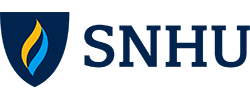The Uniform CPA Examination, prepared by the American Institute of Certified Public Accountants (AICPA), is the second component of the “Three Es”—education, examination, and experience—necessary for CPA licensure in all 55 jurisdictions.
The exam underwent significant changes in terms of structure, delivery method and exam content in January 2011, and again, most recently, in April of 2017.
Among the changes to take place in 2011 were improvements to the test-taking platform referred to as the CBT-e (computer-based testing evolution). This simply represented a new version of the original computer-based exam that replaced paper and pencil testing in 2004, but with the addition of new tools and simulation features.
Recent changes in 2017 affected actual exam content, and included modifications to scoring weights and testing times for two sections. These modifications added an hour of testing time to both the Business Environment and Concepts (BEC) and Regulation (REG) sections, and shifted the scoring weight more heavily toward those sections. This effectively resulted in an exam that is two hours longer, continuing the trend of the exam becoming more intensive as the AICPA Board of Examiners continues to place a stronger emphasis on evaluating critical thinking and analytical skills over pure math and rote memorization.
AICPA offers a tutorial and sample tests that provide applicants with an opportunity to see how the new exam functions.
Exam Components and Time Allowances
The exam includes four separate components that require a total of 16 testing hours. Each exam section can be taken at different times as long as all exam sections are completed within 18 months of passing the first component.
Business Environment and Concepts (BEC) – 4 hours – This component requires demonstrating an understanding of general business concepts including the global business environment and individual business strategies. Knowledge is demonstrated through written examples and scenarios. This component tests candidates’ knowledge of financial reporting, tax preparation, auditing, and attestation. Communication skills are of importance in this section.
Financial Accounting and Reporting (FAR) – 4 hours – This section tests on the financial reporting framework issued by several standard-setters—including FASB, IASB, U.S. SEC, and the GASB. Task-based skill testing is performed, including an opportunity to demonstrate knowledge of different standards by comparing respective financial statements.
Regulation (REG) – 4 hours – The professional and legal responsibilities of CPAs are tested as they relate to business law, federal taxation, and ethics. Task-based testing requires the demonstration of knowledge of federal and widely-accepted uniform state laws as well as the AICPA Code of Professional Conduct.
Auditing and Attestation (AUD) – 4 hours – This section tests knowledge of International Standards on Auditing (ISAs) and the U.S. auditing standards. Candidates will be asked to demonstrate an understanding of auditing standards for issuers (public companies), non-issuers (organizations other than public companies), governmental entities, nonprofit organizations. Knowledge of accounting ethics standards and codes must be demonstrated within various testing scenarios.
Uniform CPA Exam Eligibility Requirements
Each applicant must meet the required number of semester hours in specific accounting, law, ethics and business courses as determined by their state board of accountancy to be eligible to sit for the exam. In general this means completing the 150 semester hours specified in the Uniform Accountancy Act required for licensure. Some jurisdictions allow exam applicants to sit for the exam after completing the 120 semester hours typically associated with a bachelor’s degree with stipulations requiring completion of the additional 30 hours within a given time frame specified by the respective state board.
Applicants apply to sit for the exam either through their jurisdiction’s board of accountancy or directly through NASBA’s (National Association of State Boards of Accountancy’s) Certified Public Accountant Examination Services (CPAES).
The following jurisdictions currently use CPAES to evaluate applicant eligibility to sit for the exam. Applicants from the following jurisdictions should apply to take the exam directly through CPAES:
|
|
|
|
|
|
|
|
|
|
|
|
|
|
|
|
|
|
|
|
|
|
|
|
|
|
|
|
|
|
|
|
The following jurisdictions require exam applicants to work directly with their boards of accountancy to determine eligibility. Applicants from the following jurisdictions should apply through their jurisdiction’s board of accountancy:
|
|
|
|
|
|
|
|
|
|
|
|
|
|
|
|
|
|
|
|
|
|
|
International Financial Reporting Standards (IFRS)
Following an analysis by an advisory group made up of the AICPA Board of Examiners, it was decided that since the world is becoming a global workplace, knowledge of international finance is important for all CPAs. Therefore, the first International Financial Reporting Standards (IFRS) questions were introduced in the 2011 version of the exam and additional questions are expected to be added over time.
How to Prepare for the Exam
In addition to being well-prepared on all relevant subject matter, the AICPA recommends that every CPA exam candidate invest time in becoming familiar with the exam process. The AICPA website offers monographs on the scope of exam content in “Content Specification Outlines” (CSOs) and practical issues related to the entire exam process in the “Candidate Bulletin.”
AICPA provides access to the monographs plus an exam tutorial and sample tests.
If you’re interested in learning your CPA exam results, look here to find out how.






